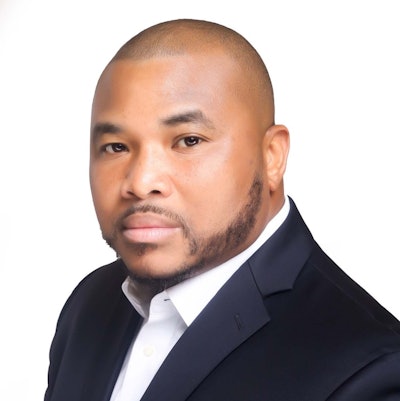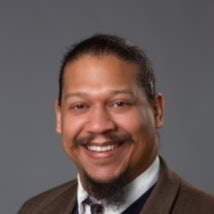Remember that wise old saying, “You never get a second chance to make a first impression?” It is an adage applied to so many situations in one’s life—your first day at a new school; your first job interview; an appointment with a new client; or possibly meeting your significant other’s parents for the first time. In each scenario, you tried to put forth the best version of yourself, whether it was the way you dressed, wore your hair, your manners, or the way you spoke. Dr. Adriel A. Hilton
Dr. Adriel A. Hilton
This expression is equally relevant to students applying to college. When prospective students take the campus tour, they are shown the buildings where they will learn, eat, and live. It is imperative that all these buildings make a good first impression, particularly the residential halls. Inferior campus facilities impact the ability to both recruit and retain students as well as attract the best faculty, and the evidence is apparent across the entire higher education landscape. What Murray Sperber described in his bestseller Beer and Circus in 2001 is every bit as true today: the academic enterprise is decentered, and the quality of housing amenities, the robustness of student life programming, and the quality of an institution’s athletic teams are primary drivers of undergraduate enrollment. The institution’s front porch must be pristine to invite further examination of the proverbial mansion.
Increasingly, due to the democratizing force of social media, we are privy to common complaints from students living in residential halls on campuses with ever-increasing deferred maintenance backlogs. There are many composed lists posted online that include all or some of these complaints—dampness, mold, poor heating and cooling, lack of hot water, rodents and pests, small spaces, little privacy, and constant distractions. As a generation that puts everything on social media, pictures of these poor living conditions can easily become public knowledge, and cause the exact kind of virality that keeps university administrators up at night.
There are compound reasons that colleges fall behind in facilities management, renovation, and new construction duties. Over the past four decades, from the taxpayer revolt of the Reagan years through decades of disinvestment at the federal and state levels, campuses find themselves more desperate than ever to clear deferred maintenance backlogs. Additionally, higher education has experienced a decline in undergraduate enrollment due to waning demographics of college-going students, plus today’s high schoolers are rethinking the value of a four-year degree. Also, there is the affordability of college. As more and more institutions continue to raise tuition to meet rising costs due to dwindling revenue streams and state and federal funding, students are not only looking for value but are hesitant to take on the debt of a college education. As the rash of college closures in recent years demonstrates, many of those institutions lack significant revenues to remain solvent and have ceased operating. Historically Black colleges and universities (HBCUs), unfortunately, appear to be suffering the most. According to the Government Accountability Office, “The median endowment for HBCUs is half that of other colleges and universities of the same size.” Dr. William Broussard
Dr. William Broussard
A common refrain is that HBCUs must raise money to address this situation. Colleges need to be innovative, creative, and committed to this cause. They need to explore every avenue that is somehow connected to the institution—constituents, alumni, graduate chapters of fraternities and sororities, local businesses, alumni entrepreneurs, and former athletes. The institutions need to be diligent about the old fundraising plans that are tried and true but also find new and creative revenue streams.
Administrators must be more creative in generating new revenue, as well. This is especially true in rural areas where HBCUs feature the largest and most diverse gathering spaces. These institutions should consider utilizing one’s own campus facilities such as renting out meeting rooms, common areas for weddings, and offering catering options to maximize revenue that can also introduce new populations to the institution. Since classrooms are typically available in the evenings or weekends, it is also an opportunity to offer continuing education or professional development courses that coordinate with area businesses. These could be non-credit courses for non-traditional students that lead to certifications, improve job skills, English as a Second Language, or even customized employee training curriculum.
Letting campus facilities—buildings, grounds, and residential halls—lay fallow versus attempting to secure the resources to fix those problems is detrimental to a college or university’s survival. Poor amenities have a negative impact on the ability to recruit and retain both students and elite faculty. With more and more institutions struggling to survive, now is not the time to be complacent. Now is the time to be creative and innovative. Now is the time to network, make contacts, reach out to your alumni and area businesses. Alumni can also be effective advocates by contacting elected officials, organizing with other alumni to create awareness, and collaborating with university officials to develop solutions through alumni chapters and voicing concerns at town halls.
When an area college or university closes, it does not just affect the current students. It affects the local economy, alumni and local citizens’ pride, and the lives of every person connected to the college, particularly alumni. Most of all, a rich piece of history is lost forever.
Dr. Adriel A. Hilton is an associate professor of education at Southern University at New Orleans (SUNO). Most recently, he served as vice-chancellor for student affairs and enrollment management at SUNO.
Dr. William Broussard is vice-chancellor for university advancement and chief executive officer of the University of Wisconsin-Stevens Point Foundation.





















